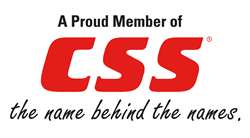Adhesive anchors offer many advantages for applications requiring high load capacities yet not allowing mechanical expansion forces in the base material. Adhesive systems also include the ability to be used with a variety of steel element materials.
The load transfer mechanism of adhesive anchors bases on bond formed by the adhesive between the anchor and the wall of the drilled hole. The annular gap is completely filled with adhesive, sealing the anchor hole against weather. Adhesive mortars consist of aggregates and binder in the form of unsaturated polyester, vinylester, vinylester with cement (hybrid systems) or epoxy. A ll adhesive types have different strengths and cost advantages.
Adhesive systems are further classified according to their delivery method. Injection systems provide the adhesive in plastic cartridges which is mixed through a static mixer and dispensed into the drilled hole. Sufficient cleaning of the drilled hole prior to installation of the anchor or reinforcement bar is of paramount importance. Capsule systems have the adhesive encapsulated in a glass capsule which is inserted into the drilled hole and mixed during anchor setting.
In Europe and many other countries, adhesive anchors used for applications in concrete are designed according to the EOTA TR 029. Adhesive anchors used for applications in masonry can be designed according to the ETAG 029 Annex C. Adhesive rebar anchoring systems are designed in compliance with structural concrete design codes as the Eurocode 2 EN 1992-1-1.
